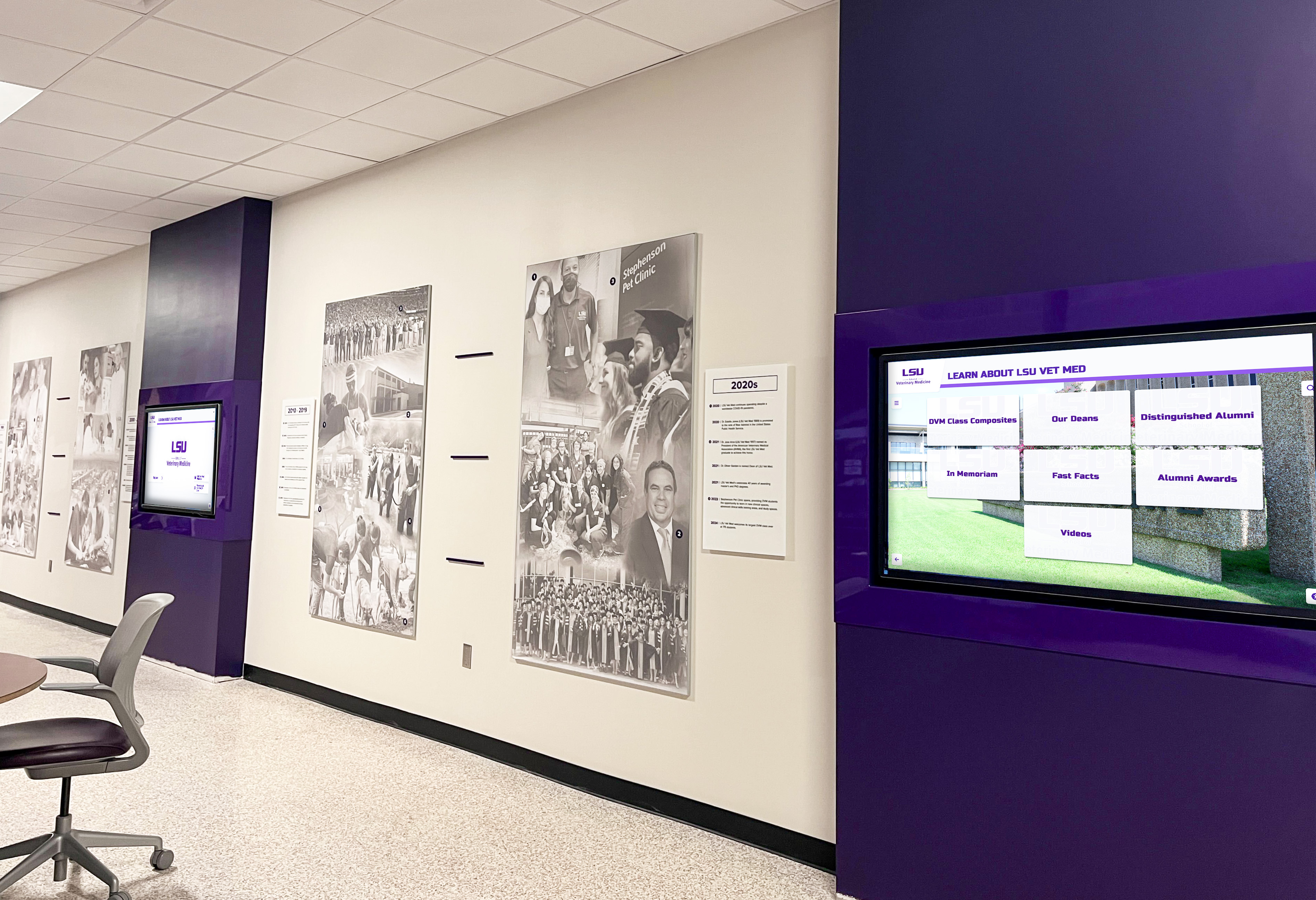College athletics departments face unique challenges in showcasing awards, honors, and achievements across their digital platforms. For the hundreds of institutions using Sidearm Sports as their athletics website platform, integrating rich, interactive awards content requires careful attention to HTML structure, CSS styling, and JavaScript functionality that works within Sidearm’s content management system. This comprehensive guide provides athletic communications professionals, web developers, and marketing teams with practical strategies for displaying awards and recognition content effectively on Sidearm-powered athletics websites.
Understanding Sidearm Sports Platform Architecture
Sidearm Sports provides content management systems specifically designed for college athletics departments, powering websites for NCAA Division I, II, and III institutions across the country. The platform offers customizable templates and modules that athletics staff can use to publish news, rosters, schedules, statistics, and multimedia content without requiring extensive technical expertise.
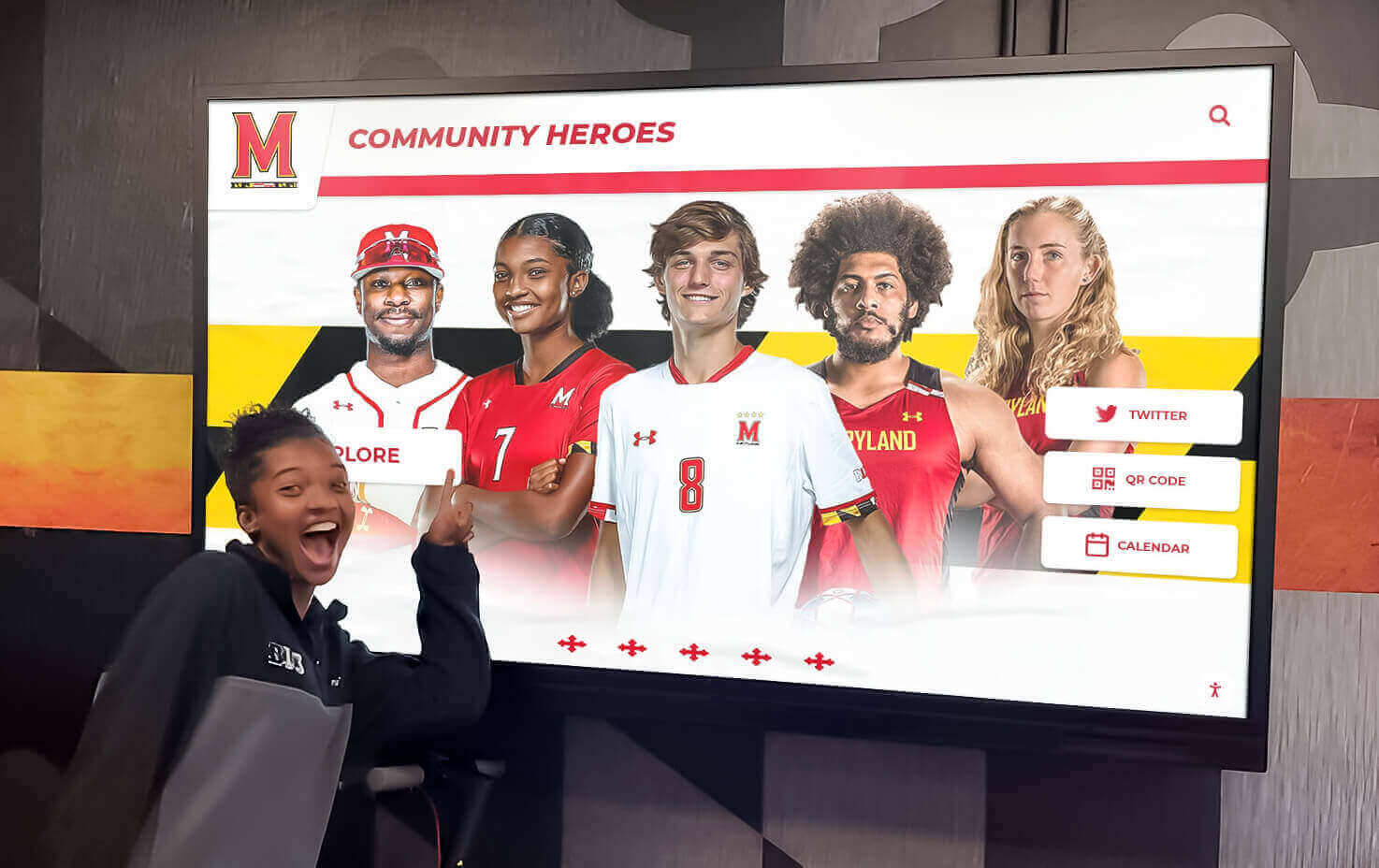
Platform Constraints and Opportunities
When developing awards and recognition features for Sidearm sites, developers must work within specific technical parameters:
Content Management System Limitations: Sidearm’s CMS provides structured content entry forms rather than direct HTML access for most users. This means awards content typically needs to fit within existing page templates and content blocks.
Template-Based Design: Athletic websites use pre-built templates that maintain consistent branding and navigation across pages. Custom awards sections must complement these established design patterns rather than conflict with them.
JavaScript Restrictions: Many CMS platforms limit JavaScript execution for security reasons. Understanding which JavaScript libraries and frameworks are permitted determines what interactive features are feasible for awards displays.
Mobile Responsiveness Requirements: With significant traffic coming from mobile devices, any awards integration must function flawlessly across smartphones, tablets, and desktop browsers.
Performance Considerations: Athletics websites often experience traffic spikes during games and major announcements. Awards pages must load quickly and perform reliably under high-traffic conditions.
For institutions seeking to enhance their digital recognition beyond these platform constraints, solutions like Rocket Alumni Solutions offer purpose-built platforms specifically designed for awards and recognition content, with capabilities extending beyond standard CMS limitations.
HTML Structure for Awards Content
Effective awards integration begins with semantic, accessible HTML that clearly communicates achievement information to both users and search engines.
Semantic HTML Elements for Recognition Content
Modern HTML5 provides semantic elements that improve awards page structure:
Article Elements for Individual Awards: Each award, honor, or achievement should be wrapped in an <article> element, signaling that it represents self-contained content.
<article class="athletic-award">
<header>
<h3>All-American Honor</h3>
<p class="award-recipient">Jane Smith '24</p>
</header>
<div class="award-details">
<p class="sport">Women's Soccer</p>
<p class="award-date">2023-24 Season</p>
</div>
<p class="award-description">
First-team All-American selection by the United Soccer Coaches association,
recognizing outstanding performance throughout the championship season.
</p>
</article>
Section Elements for Award Categories: Group related awards using <section> elements with descriptive headings that help users navigate different recognition types.
Definition Lists for Award Details: When presenting award specifications, academic honors, or achievement criteria, definition lists (<dl>, dt>, <dd>) provide semantic clarity:
<dl class="award-specifications">
<dt>Award Name</dt>
<dd>Conference Player of the Year</dd>
<dt>Sport</dt>
<dd>Basketball</dd>
<dt>Season</dt>
<dd>2023-24</dd>
<dt>Organization</dt>
<dd>Atlantic Coast Conference</dd>
</dl>
Structured Data Markup for SEO
Search engines increasingly recognize structured data that explicitly identifies awards and achievements. Implementing Schema.org markup helps awards content appear in rich search results:
<article itemscope itemtype="https://schema.org/Award">
<h3 itemprop="name">Academic All-American</h3>
<div itemprop="about" itemscope itemtype="https://schema.org/Person">
<span itemprop="name">John Doe</span>
<meta itemprop="alumniOf" content="State University">
</div>
<time itemprop="datePublished" datetime="2024-05-15">May 2024</time>
<p itemprop="description">
Recognized for excellence in both athletics and academics...
</p>
</article>
This structured approach helps search engines understand award relationships and can enhance how achievement content appears in Google search results, particularly for athletes’ names and specific honors.
Athletic departments implementing comprehensive college athletics hall of fame recognition find that proper HTML structure significantly improves content discoverability and user engagement.
CSS Styling Strategies for Athletic Recognition
Visual presentation determines whether awards content captures attention or gets overlooked. CSS styling must balance athletic department branding with readability and visual hierarchy.
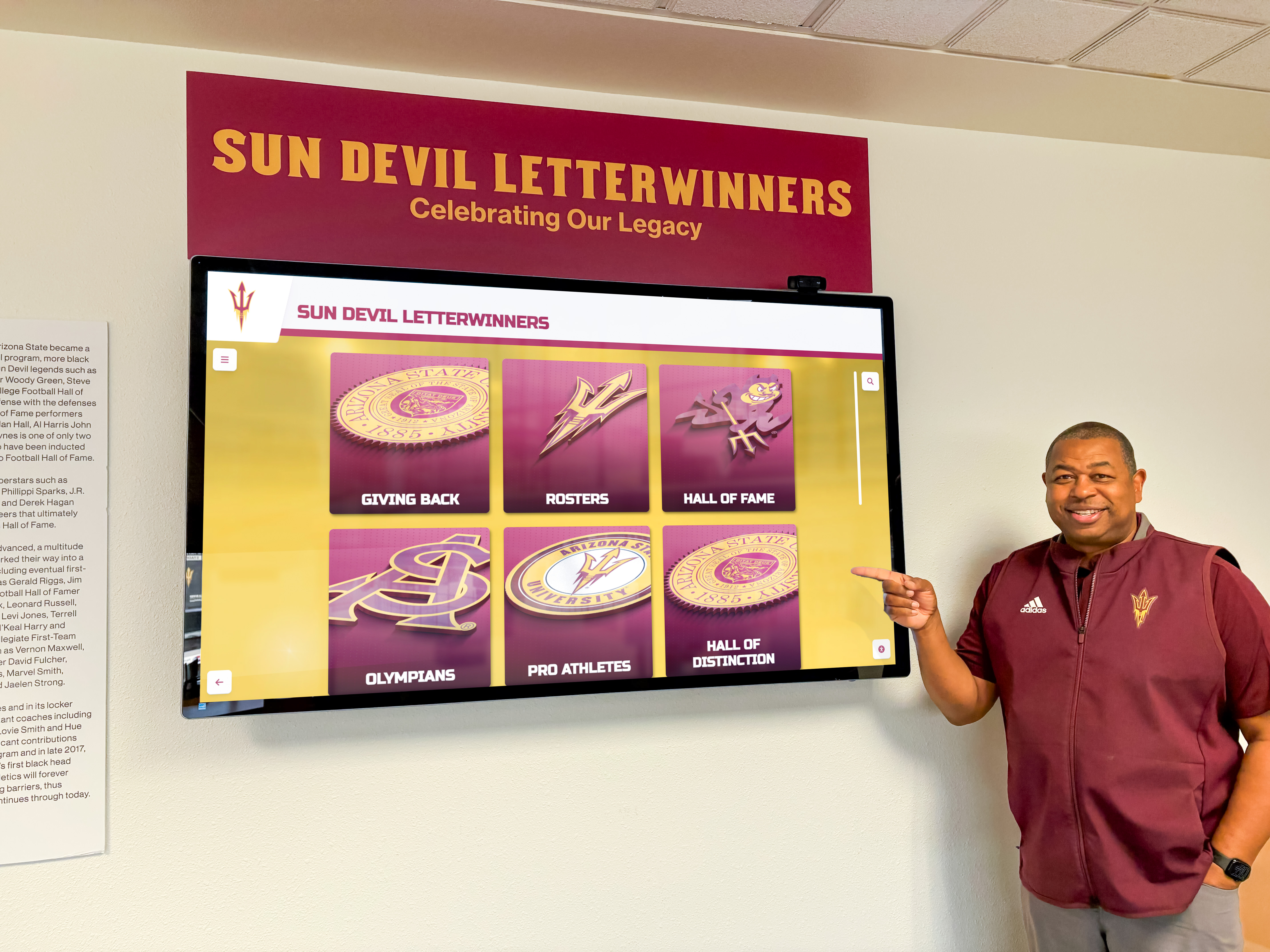
Responsive Grid Layouts for Awards Displays
Modern CSS Grid and Flexbox enable flexible layouts that adapt to different screen sizes while maintaining visual consistency:
.awards-container {
display: grid;
grid-template-columns: repeat(auto-fit, minmax(300px, 1fr));
gap: 2rem;
padding: 2rem 1rem;
}
.athletic-award {
background: #ffffff;
border: 1px solid #e0e0e0;
border-radius: 8px;
padding: 1.5rem;
box-shadow: 0 2px 4px rgba(0, 0, 0, 0.1);
transition: transform 0.2s ease, box-shadow 0.2s ease;
}
.athletic-award:hover {
transform: translateY(-4px);
box-shadow: 0 4px 12px rgba(0, 0, 0, 0.15);
}
This responsive grid automatically adjusts the number of columns based on available width, ensuring awards display attractively on devices ranging from smartphones to large desktop monitors.
Typography for Recognition Content
Typography hierarchy helps users quickly identify important information:
.athletic-award h3 {
font-size: 1.5rem;
font-weight: 700;
color: #003366; /* Team primary color */
margin-bottom: 0.5rem;
line-height: 1.3;
}
.award-recipient {
font-size: 1.125rem;
font-weight: 600;
color: #cc0000; /* Team secondary color */
margin-bottom: 1rem;
}
.award-details {
display: flex;
gap: 1rem;
margin-bottom: 1rem;
font-size: 0.875rem;
color: #666666;
}
.award-description {
font-size: 1rem;
line-height: 1.6;
color: #333333;
}
Brand Integration: Replace color values with your institution’s specific brand colors, ensuring awards content feels integrated with the broader athletics website aesthetic.
Readability Standards: Maintain sufficient contrast ratios (minimum 4.5:1 for body text, 3:1 for large text) to meet WCAG accessibility guidelines, ensuring awards content remains readable for all visitors.
Visual Indicators for Award Prestige
Different award levels deserve visual differentiation:
/* Standard award styling */
.athletic-award {
border-left: 4px solid #cccccc;
}
/* Conference-level awards */
.athletic-award.conference-award {
border-left-color: #0066cc;
background: linear-gradient(to right, #f0f8ff 0%, #ffffff 100%);
}
/* National-level awards */
.athletic-award.national-award {
border-left-color: #cc0000;
background: linear-gradient(to right, #fff5f5 0%, #ffffff 100%);
}
/* All-American honors */
.athletic-award.all-american {
border-left-color: #ffd700;
background: linear-gradient(to right, #fffef0 0%, #ffffff 100%);
position: relative;
}
.athletic-award.all-american::before {
content: "★";
position: absolute;
top: 1rem;
right: 1rem;
font-size: 2rem;
color: #ffd700;
}
This approach provides immediate visual cues about award significance without requiring users to read detailed descriptions.
Organizations implementing digital trophy case solutions often use similar visual hierarchy principles to help visitors quickly identify the most prestigious achievements.
JavaScript Interactivity for Awards Features
JavaScript enables dynamic filtering, searching, and interactive elements that help users find specific awards and achievements efficiently.
Award Filtering and Search Functionality
Large athletics programs accumulate hundreds or thousands of awards over time. JavaScript-powered filtering helps users navigate this content:
// Award filtering system
class AwardFilter {
constructor(containerSelector) {
this.container = document.querySelector(containerSelector);
this.awards = Array.from(this.container.querySelectorAll('.athletic-award'));
this.initializeFilters();
}
initializeFilters() {
// Sport filter
document.getElementById('sport-filter').addEventListener('change', (e) => {
this.filterBySport(e.target.value);
});
// Year filter
document.getElementById('year-filter').addEventListener('change', (e) => {
this.filterByYear(e.target.value);
});
// Award level filter
document.getElementById('level-filter').addEventListener('change', (e) => {
this.filterByLevel(e.target.value);
});
// Search functionality
document.getElementById('award-search').addEventListener('input', (e) => {
this.searchAwards(e.target.value);
});
}
filterBySport(sport) {
this.awards.forEach(award => {
const awardSport = award.dataset.sport;
if (sport === 'all' || awardSport === sport) {
award.style.display = 'block';
} else {
award.style.display = 'none';
}
});
this.updateResultsCount();
}
filterByYear(year) {
this.awards.forEach(award => {
const awardYear = award.dataset.year;
if (year === 'all' || awardYear === year) {
award.style.display = 'block';
} else {
award.style.display = 'none';
}
});
this.updateResultsCount();
}
filterByLevel(level) {
this.awards.forEach(award => {
const awardLevel = award.dataset.level;
if (level === 'all' || awardLevel === level) {
award.style.display = 'block';
} else {
award.style.display = 'none';
}
});
this.updateResultsCount();
}
searchAwards(query) {
const searchTerm = query.toLowerCase().trim();
this.awards.forEach(award => {
const awardText = award.textContent.toLowerCase();
if (searchTerm === '' || awardText.includes(searchTerm)) {
award.style.display = 'block';
} else {
award.style.display = 'none';
}
});
this.updateResultsCount();
}
updateResultsCount() {
const visibleAwards = this.awards.filter(award =>
award.style.display !== 'none'
).length;
document.getElementById('results-count').textContent =
`Showing ${visibleAwards} of ${this.awards.length} awards`;
}
}
// Initialize when DOM is ready
document.addEventListener('DOMContentLoaded', () => {
new AwardFilter('.awards-container');
});
This filtering system requires awards to include data attributes specifying sport, year, and level:
<article class="athletic-award"
data-sport="basketball"
data-year="2024"
data-level="national">
<!-- Award content -->
</article>
Modal Windows for Detailed Award Information
For awards with extensive details, modal windows provide expanded information without navigating away from the main awards page:
class AwardModal {
constructor() {
this.modal = document.getElementById('award-modal');
this.modalContent = this.modal.querySelector('.modal-body');
this.closeBtn = this.modal.querySelector('.modal-close');
this.initializeEventListeners();
}
initializeEventListeners() {
// Close modal when clicking close button
this.closeBtn.addEventListener('click', () => this.close());
// Close modal when clicking outside content
this.modal.addEventListener('click', (e) => {
if (e.target === this.modal) this.close();
});
// Close modal with Escape key
document.addEventListener('keydown', (e) => {
if (e.key === 'Escape' && this.modal.classList.contains('active')) {
this.close();
}
});
// Attach click handlers to all award detail buttons
document.querySelectorAll('.view-award-details').forEach(button => {
button.addEventListener('click', (e) => {
const awardId = e.target.dataset.awardId;
this.loadAwardDetails(awardId);
});
});
}
async loadAwardDetails(awardId) {
try {
// In a real implementation, this would fetch from an API
const response = await fetch(`/api/awards/${awardId}`);
const awardData = await response.json();
this.renderAwardDetails(awardData);
this.open();
} catch (error) {
console.error('Error loading award details:', error);
this.modalContent.innerHTML = '<p>Error loading award details.</p>';
this.open();
}
}
renderAwardDetails(award) {
this.modalContent.innerHTML = `
<h2>${award.name}</h2>
<div class="award-modal-meta">
<p><strong>Recipient:</strong> ${award.recipient}</p>
<p><strong>Sport:</strong> ${award.sport}</p>
<p><strong>Year:</strong> ${award.year}</p>
<p><strong>Level:</strong> ${award.level}</p>
</div>
<div class="award-modal-description">
${award.fullDescription}
</div>
${award.imageUrl ? `<img src="${award.imageUrl}" alt="${award.name}">` : ''}
${award.stats ? this.renderStats(award.stats) : ''}
`;
}
renderStats(stats) {
return `
<div class="award-stats">
<h3>Season Statistics</h3>
<dl>
${Object.entries(stats).map(([key, value]) => `
<dt>${key}</dt>
<dd>${value}</dd>
`).join('')}
</dl>
</div>
`;
}
open() {
this.modal.classList.add('active');
document.body.style.overflow = 'hidden';
}
close() {
this.modal.classList.remove('active');
document.body.style.overflow = '';
}
}
// Initialize modal
document.addEventListener('DOMContentLoaded', () => {
new AwardModal();
});
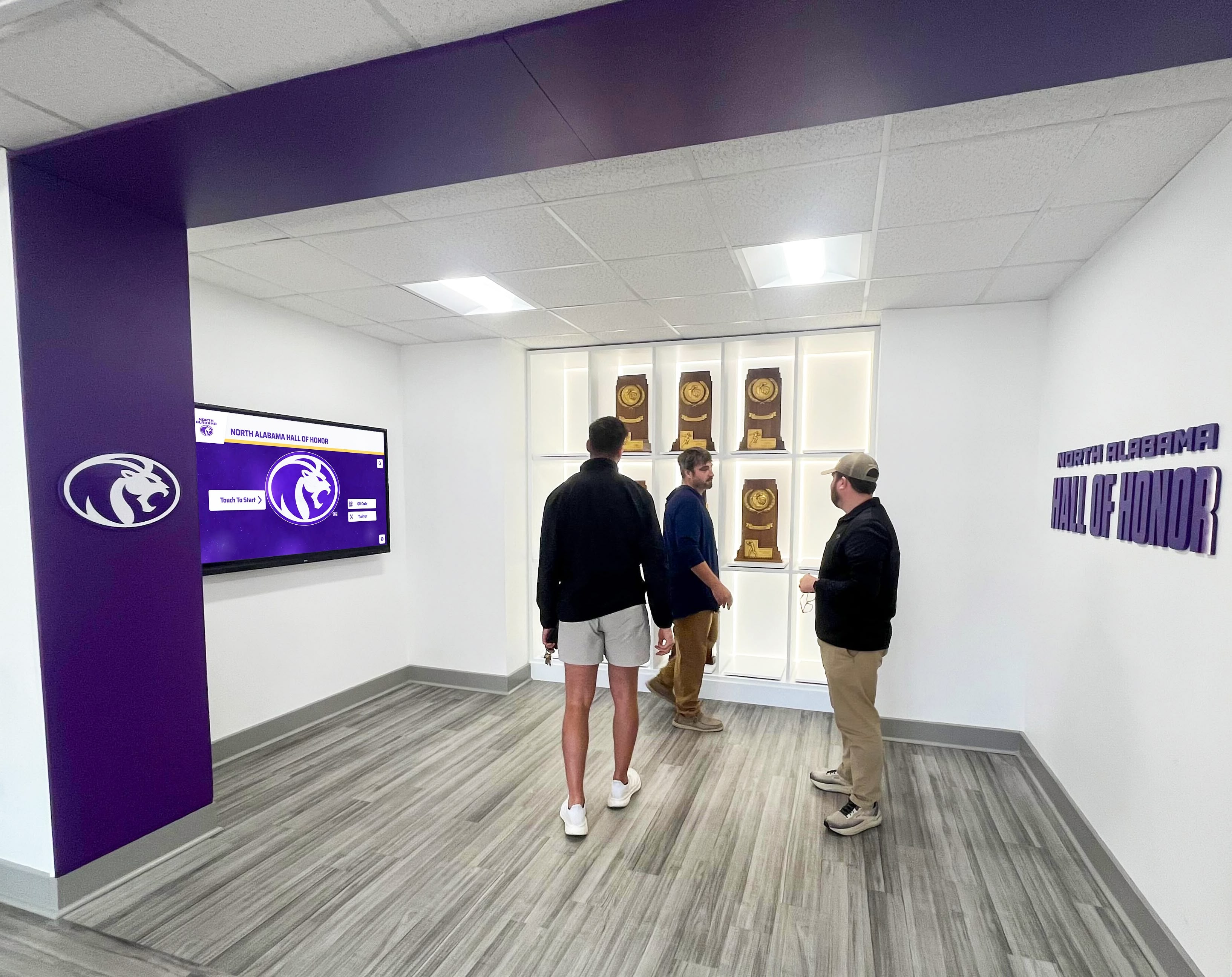
Corresponding CSS for the modal:
.award-modal {
display: none;
position: fixed;
top: 0;
left: 0;
width: 100%;
height: 100%;
background: rgba(0, 0, 0, 0.7);
z-index: 9999;
justify-content: center;
align-items: center;
padding: 2rem;
}
.award-modal.active {
display: flex;
}
.award-modal-content {
background: #ffffff;
border-radius: 8px;
max-width: 800px;
width: 100%;
max-height: 90vh;
overflow-y: auto;
position: relative;
padding: 2rem;
}
.modal-close {
position: absolute;
top: 1rem;
right: 1rem;
background: none;
border: none;
font-size: 2rem;
cursor: pointer;
color: #666666;
transition: color 0.2s ease;
}
.modal-close:hover {
color: #000000;
}
Institutions implementing interactive touchscreen displays for physical locations often use similar modal approaches to provide expanded achievement details without overwhelming the main interface.
Integration Patterns for Sidearm CMS
Successfully deploying custom awards features within Sidearm’s platform requires understanding how to work within CMS constraints while maximizing customization possibilities.
Custom Content Blocks and Modules
Sidearm allows athletics departments to create custom content blocks that can be inserted into various page templates. Awards content often works best as modular components:
Reusable Award Components: Develop standardized HTML structures for different award types (All-American, Academic Honor, Conference Award) that can be copied and customized for each specific honor.
Template Variables: If your Sidearm implementation allows custom fields, create template variables for common award attributes (recipient name, sport, year, level) that populate consistent HTML structures automatically.
Embedded Code Sections: Many Sidearm templates include areas where HTML, CSS, and JavaScript can be embedded directly. Use these sections for awards-specific functionality while keeping code organized and maintainable.
Working with Sidearm’s JavaScript Restrictions
CMS platforms typically restrict JavaScript execution to prevent security vulnerabilities and conflicts. When developing awards features for Sidearm sites:
Vanilla JavaScript First: Avoid dependencies on external libraries unless you’ve confirmed they’re permitted and won’t conflict with Sidearm’s existing JavaScript.
Async Loading for Heavy Scripts: If awards features require substantial JavaScript, load scripts asynchronously to prevent blocking page rendering:
<script async src="/custom/awards-filter.js"></script>
Progressive Enhancement: Build awards pages that function without JavaScript, then enhance with interactive features for browsers that support them. This ensures all users can access award content regardless of JavaScript availability.
Event Delegation: Rather than attaching event listeners to individual elements, use event delegation on parent containers:
document.querySelector('.awards-container').addEventListener('click', (e) => {
if (e.target.matches('.view-details-btn')) {
const awardId = e.target.dataset.awardId;
openAwardModal(awardId);
}
});
This approach performs better and works reliably even when award elements are added dynamically.
Mobile-First Responsive Considerations
With athletics website traffic increasingly coming from mobile devices, responsive design is non-negotiable:
Touch-Friendly Interactions: Ensure buttons and interactive elements meet minimum touch target sizes (44x44 pixels).
Simplified Mobile Layouts: Award cards that display side-by-side on desktop should stack vertically on mobile for readability.
Performance Optimization: Mobile users often have slower connections. Optimize images, minimize JavaScript, and consider lazy-loading awards that appear below the fold.
/* Mobile-first base styles */
.athletic-award {
padding: 1rem;
margin-bottom: 1rem;
}
/* Tablet and larger */
@media (min-width: 768px) {
.awards-container {
grid-template-columns: repeat(2, 1fr);
}
.athletic-award {
padding: 1.5rem;
}
}
/* Desktop */
@media (min-width: 1200px) {
.awards-container {
grid-template-columns: repeat(3, 1fr);
}
}
Athletic departments implementing college recruitment digital recognition strategies find that mobile-optimized awards displays significantly improve engagement from prospective student-athletes who primarily browse on smartphones.
Performance Optimization for Awards Pages
Athletics websites with hundreds of awards and honors require performance optimization to maintain fast page loads and smooth user experiences.
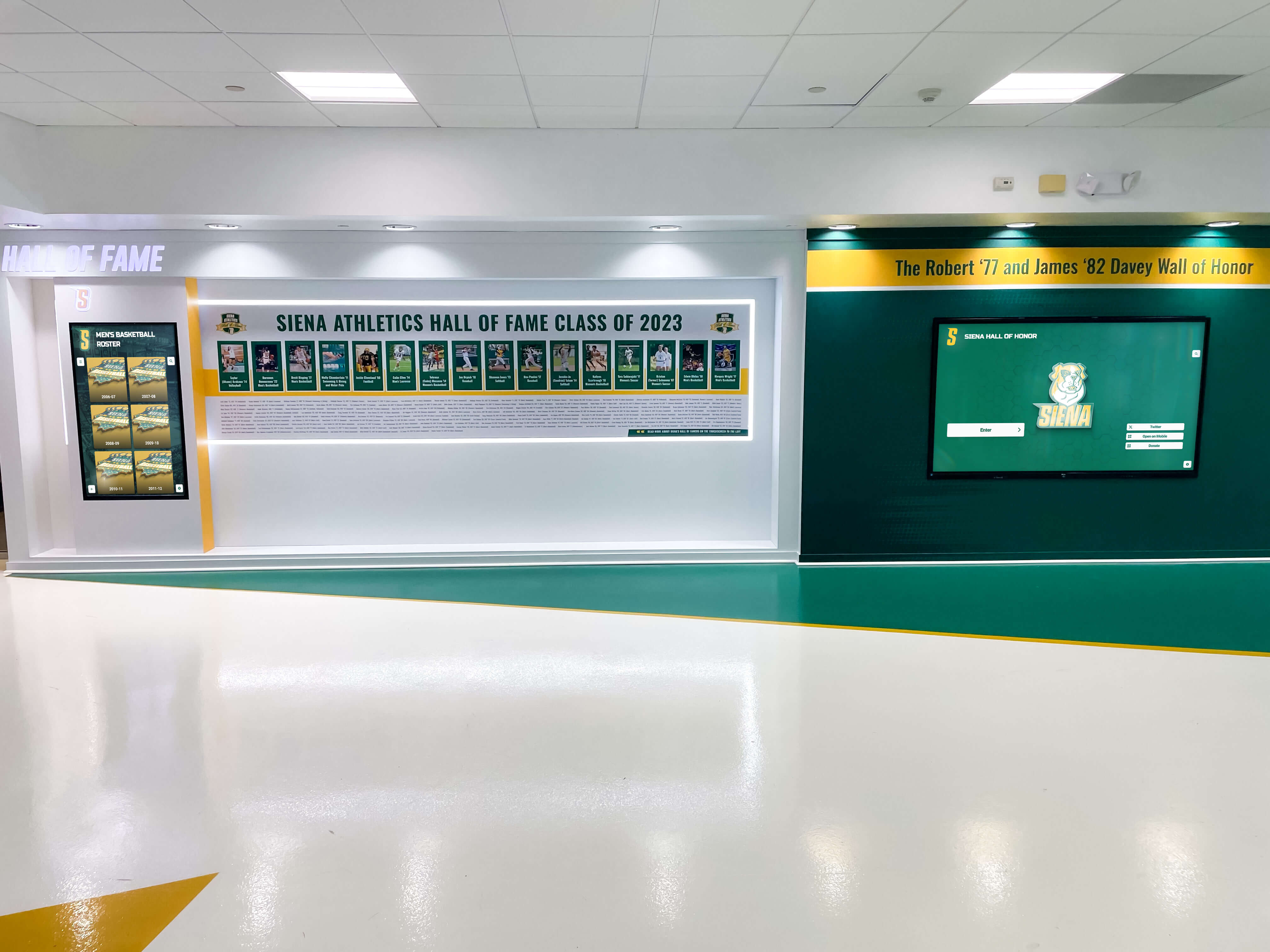
Lazy Loading for Award Images
Award profiles often include photos of recipients, which can significantly impact page load times. Lazy loading defers image loading until they’re needed:
<img src="placeholder.jpg"
data-src="actual-image.jpg"
class="lazy-load-image"
alt="Award recipient">
document.addEventListener('DOMContentLoaded', () => {
const lazyImages = document.querySelectorAll('.lazy-load-image');
const imageObserver = new IntersectionObserver((entries, observer) => {
entries.forEach(entry => {
if (entry.isIntersecting) {
const img = entry.target;
img.src = img.dataset.src;
img.classList.remove('lazy-load-image');
observer.unobserve(img);
}
});
});
lazyImages.forEach(img => imageObserver.observe(img));
});
This approach loads images only as users scroll them into view, dramatically improving initial page load performance.
Pagination and Infinite Scroll
For athletics programs with extensive award histories, pagination or infinite scroll prevents overwhelming users with hundreds of awards simultaneously:
class AwardPagination {
constructor(awards, itemsPerPage = 12) {
this.awards = awards;
this.itemsPerPage = itemsPerPage;
this.currentPage = 1;
this.totalPages = Math.ceil(awards.length / itemsPerPage);
this.renderPage();
this.renderPaginationControls();
}
renderPage() {
const startIndex = (this.currentPage - 1) * this.itemsPerPage;
const endIndex = startIndex + this.itemsPerPage;
const pageAwards = this.awards.slice(startIndex, endIndex);
const container = document.querySelector('.awards-container');
container.innerHTML = pageAwards.map(award =>
this.renderAward(award)
).join('');
}
renderAward(award) {
return `
<article class="athletic-award">
<h3>${award.name}</h3>
<p class="award-recipient">${award.recipient}</p>
<!-- Additional award details -->
</article>
`;
}
renderPaginationControls() {
const controls = document.querySelector('.pagination-controls');
controls.innerHTML = `
<button ${this.currentPage === 1 ? 'disabled' : ''}
onclick="pagination.previousPage()">
Previous
</button>
<span>Page ${this.currentPage} of ${this.totalPages}</span>
<button ${this.currentPage === this.totalPages ? 'disabled' : ''}
onclick="pagination.nextPage()">
Next
</button>
`;
}
nextPage() {
if (this.currentPage < this.totalPages) {
this.currentPage++;
this.renderPage();
this.renderPaginationControls();
window.scrollTo({ top: 0, behavior: 'smooth' });
}
}
previousPage() {
if (this.currentPage > 1) {
this.currentPage--;
this.renderPage();
this.renderPaginationControls();
window.scrollTo({ top: 0, behavior: 'smooth' });
}
}
}
CSS Performance Best Practices
Efficient CSS improves rendering performance, particularly important for awards pages with many elements:
/* Use CSS containment for independent award cards */
.athletic-award {
contain: layout style paint;
}
/* Avoid expensive properties */
.athletic-award:hover {
/* Good: Uses transform (GPU-accelerated) */
transform: translateY(-4px);
/* Avoid: Changes layout properties */
/* margin-top: -4px; */
}
/* Minimize repaints */
.award-image {
will-change: transform;
}
Athletic programs following digital wall of fame maintenance best practices ensure their awards pages continue performing well as content grows over time.
Accessibility Standards for Awards Content
Ensuring awards pages are accessible to all users, including those with disabilities, is both legally required and ethically important.
ARIA Labels and Roles
Enhance awards content with ARIA (Accessible Rich Internet Applications) attributes:
<section aria-labelledby="awards-heading">
<h2 id="awards-heading">2024 All-American Honors</h2>
<div role="list" class="awards-container">
<article role="listitem" class="athletic-award">
<h3>First-Team All-American</h3>
<p><span aria-label="Recipient">Jane Smith</span></p>
<p><span aria-label="Sport">Women's Basketball</span></p>
</article>
</div>
</section>
<button aria-label="Filter awards by sport"
aria-expanded="false"
aria-controls="sport-filter-menu"
class="filter-toggle">
Filter by Sport
</button>
<div id="sport-filter-menu"
role="menu"
aria-hidden="true"
class="filter-menu">
<!-- Filter options -->
</div>
Keyboard Navigation
All interactive awards features must be fully operable via keyboard:
// Ensure modal can be navigated with keyboard
class AccessibleAwardModal extends AwardModal {
open() {
super.open();
this.trapFocus();
}
trapFocus() {
const focusableElements = this.modal.querySelectorAll(
'button, [href], input, select, textarea, [tabindex]:not([tabindex="-1"])'
);
const firstElement = focusableElements[0];
const lastElement = focusableElements[focusableElements.length - 1];
this.modal.addEventListener('keydown', (e) => {
if (e.key === 'Tab') {
if (e.shiftKey && document.activeElement === firstElement) {
e.preventDefault();
lastElement.focus();
} else if (!e.shiftKey && document.activeElement === lastElement) {
e.preventDefault();
firstElement.focus();
}
}
});
firstElement.focus();
}
}
Screen Reader Optimization
Ensure awards content makes sense when read sequentially by screen readers:
<article class="athletic-award">
<h3 id="award-123">Academic All-American</h3>
<div aria-labelledby="award-123">
<p>
<span class="visually-hidden">Recipient:</span>
John Doe, Class of 2024
</p>
<p>
<span class="visually-hidden">Sport:</span>
Men's Soccer
</p>
<p>
<span class="visually-hidden">Achievement details:</span>
Maintained 3.9 GPA while starting all 20 matches...
</p>
</div>
</article>
.visually-hidden {
position: absolute;
width: 1px;
height: 1px;
margin: -1px;
padding: 0;
overflow: hidden;
clip: rect(0, 0, 0, 0);
white-space: nowrap;
border: 0;
}
Organizations implementing accessible digital recognition displays ensure their awards content serves all community members regardless of ability.
SEO Optimization for Athletic Awards Pages
Awards and recognition pages provide valuable content that can attract prospective student-athletes, media members, and supporters through search engines.
Title Tags and Meta Descriptions
Each awards page should have descriptive, keyword-rich titles and meta descriptions:
<title>All-American Awards | State University Athletics</title>
<meta name="description" content="Celebrating State University student-athletes who earned All-American honors across all sports. View our complete history of national recognition and outstanding athletic achievement.">
Heading Structure and Keyword Integration
Use hierarchical headings that naturally incorporate relevant keywords:
<h1>State University All-American Athletes</h1>
<h2>2024 All-American Honorees</h2>
<h3>Women's Cross Country</h3>
<h3>Men's Swimming & Diving</h3>
<h2>All-American Selection History</h2>
<h3>Most All-American Honors by Sport</h3>
<h3>Recent National Recognition</h3>
Internal Linking Strategies
Connect awards pages to related content throughout the athletics website:
<p>
Jane Smith's All-American recognition continues a strong tradition of
<a href="/womens-basketball/history">women's basketball excellence</a>
that includes multiple conference championships and NCAA tournament appearances.
</p>
<p>
Academic All-Americans demonstrate the balance between athletic and scholarly
achievement that defines our <a href="/student-athlete-support">student-athlete
support programs</a>.
</p>
For broader digital recognition strategies, athletic departments can explore digital trophy display solutions that complement website awards content with physical campus installations.
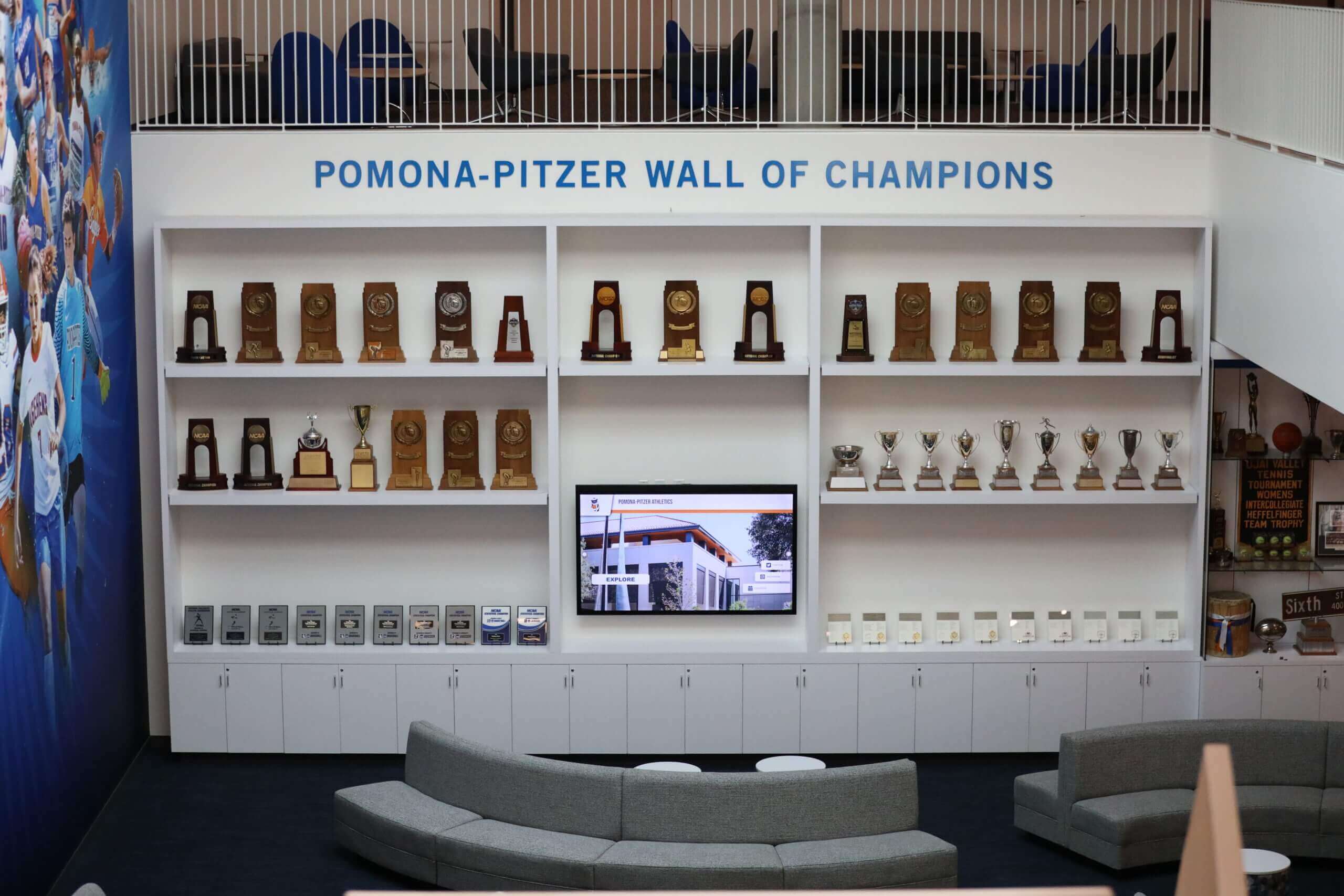
Common Integration Challenges and Solutions
Athletic communications teams frequently encounter specific challenges when adding awards features to Sidearm sites.
Challenge: Limited Direct HTML Access
Problem: Many Sidearm users have content editor access but not direct HTML editing capabilities, making it difficult to implement custom awards displays.
Solutions:
- Work with athletic department IT staff or Sidearm support to implement custom modules
- Use Sidearm’s built-in content blocks and customize them with available styling options
- Request creation of custom page templates specifically for awards content
- Utilize embedded content areas where HTML/CSS/JS can be added
Challenge: Maintaining Consistent Updates
Problem: Athletics departments generate new awards regularly, but updating website content often falls behind.
Solutions:
- Create standardized templates that make adding new awards quick and consistent
- Implement RSS feeds or APIs that automatically pull award data from external systems
- Establish regular content update schedules (weekly, monthly) with assigned responsibilities
- Use content management workflows that route new awards through appropriate approval processes
Challenge: Mobile Performance Issues
Problem: Awards pages with many images and interactive elements may load slowly on mobile devices.
Solutions:
- Implement lazy loading for images (code examples provided earlier)
- Use pagination to limit the number of awards displayed simultaneously
- Optimize images before upload (resize appropriately, compress for web)
- Minimize JavaScript execution and use efficient CSS
- Consider dedicated mobile templates with simplified layouts
Challenge: Cross-Sport Organization
Problem: With awards spanning multiple sports, seasons, and levels, organizing content logically challenges users trying to find specific information.
Solutions:
- Implement the JavaScript filtering system provided earlier in this guide
- Create dedicated landing pages for major award categories (All-Americans, Academic Honors, Conference Awards)
- Use consistent navigation and breadcrumbs to help users understand content relationships
- Provide search functionality that works across all awards content
Athletic departments managing college football hall of fames and sport-specific recognition often face similar organizational challenges that benefit from structured approaches to content categorization.
Alternative Solutions for Comprehensive Recognition
While Sidearm Sports provides robust content management for general athletics website needs, some institutions find that awards and recognition content benefits from specialized platforms designed specifically for showcasing achievements.
Purpose-Built Recognition Platforms
Solutions like Rocket Alumni Solutions offer platforms specifically designed for athletic recognition and hall of fame content, with features including:
Unlimited Achievement Capacity: No space constraints limit how many awards and honors can be showcased, unlike physical displays or limited CMS page templates.
Advanced Search and Filtering: Purpose-built search functionality helps users find specific awards, athletes, or achievements across decades of history.
Interactive Displays: Support for both web and touchscreen kiosk software enables recognition in physical locations as well as online.
Easy Content Management: Intuitive interfaces allow athletics staff to add new awards quickly without technical expertise.
Automatic Responsiveness: Content automatically adapts to all devices without custom development work.
Integration Capabilities: Can be embedded within existing Sidearm sites or operate as standalone recognition portals.
Hybrid Approaches
Many athletic departments successfully combine Sidearm’s content management for day-to-day operations with specialized recognition platforms for comprehensive awards showcases:
Sidearm for Current Season: Use Sidearm’s native tools for timely announcement of recent awards and honors.
Recognition Platform for Historical Archives: Leverage specialized platforms for browsing complete award histories, hall of fame inductees, and record books.
Cross-Linking Between Systems: Link from Sidearm news articles and roster pages to detailed achievement profiles in recognition platforms.
This approach provides optimal solutions for different content types while maintaining cohesive user experiences.
Organizations implementing showcasing college commitments and other recruiting-focused recognition find that hybrid approaches effectively serve multiple audiences with specialized content needs.
Implementation Checklist
Before deploying custom awards features on Sidearm athletics websites, verify completion of these essential steps:
Planning and Design:
- ☐ Inventory existing awards content requiring integration
- ☐ Define awards categories and organizational structure
- ☐ Create visual designs consistent with athletic department branding
- ☐ Identify required functionality (filtering, search, modals, etc.)
- ☐ Determine mobile-specific layouts and interactions
Development:
- ☐ Build semantic HTML structures for different award types
- ☐ Develop responsive CSS that works across all device sizes
- ☐ Implement JavaScript features with progressive enhancement
- ☐ Optimize performance (lazy loading, pagination, efficient code)
- ☐ Test functionality across browsers (Chrome, Firefox, Safari, Edge)
Content and SEO:
- ☐ Add structured data markup for search engines
- ☐ Write descriptive title tags and meta descriptions
- ☐ Create clear heading hierarchy with keyword integration
- ☐ Establish internal linking between awards and related content
- ☐ Prepare initial awards content for launch
Accessibility and Compliance:
- ☐ Verify keyboard navigation works for all interactive elements
- ☐ Add appropriate ARIA labels and roles
- ☐ Test with screen readers (NVDA, JAWS, VoiceOver)
- ☐ Ensure color contrast meets WCAG standards
- ☐ Confirm touch targets meet minimum size requirements
Testing and Refinement:
- ☐ Test on actual mobile devices (not just browser emulation)
- ☐ Verify performance on slower network connections
- ☐ Conduct usability testing with representative users
- ☐ Review analytics to identify improvements
- ☐ Establish ongoing maintenance procedures
Integration with Sidearm:
- ☐ Confirm compatibility with Sidearm platform restrictions
- ☐ Test within actual Sidearm page templates
- ☐ Verify JavaScript doesn’t conflict with existing Sidearm scripts
- ☐ Ensure CSS specificity doesn’t break existing styles
- ☐ Document implementation for future maintenance
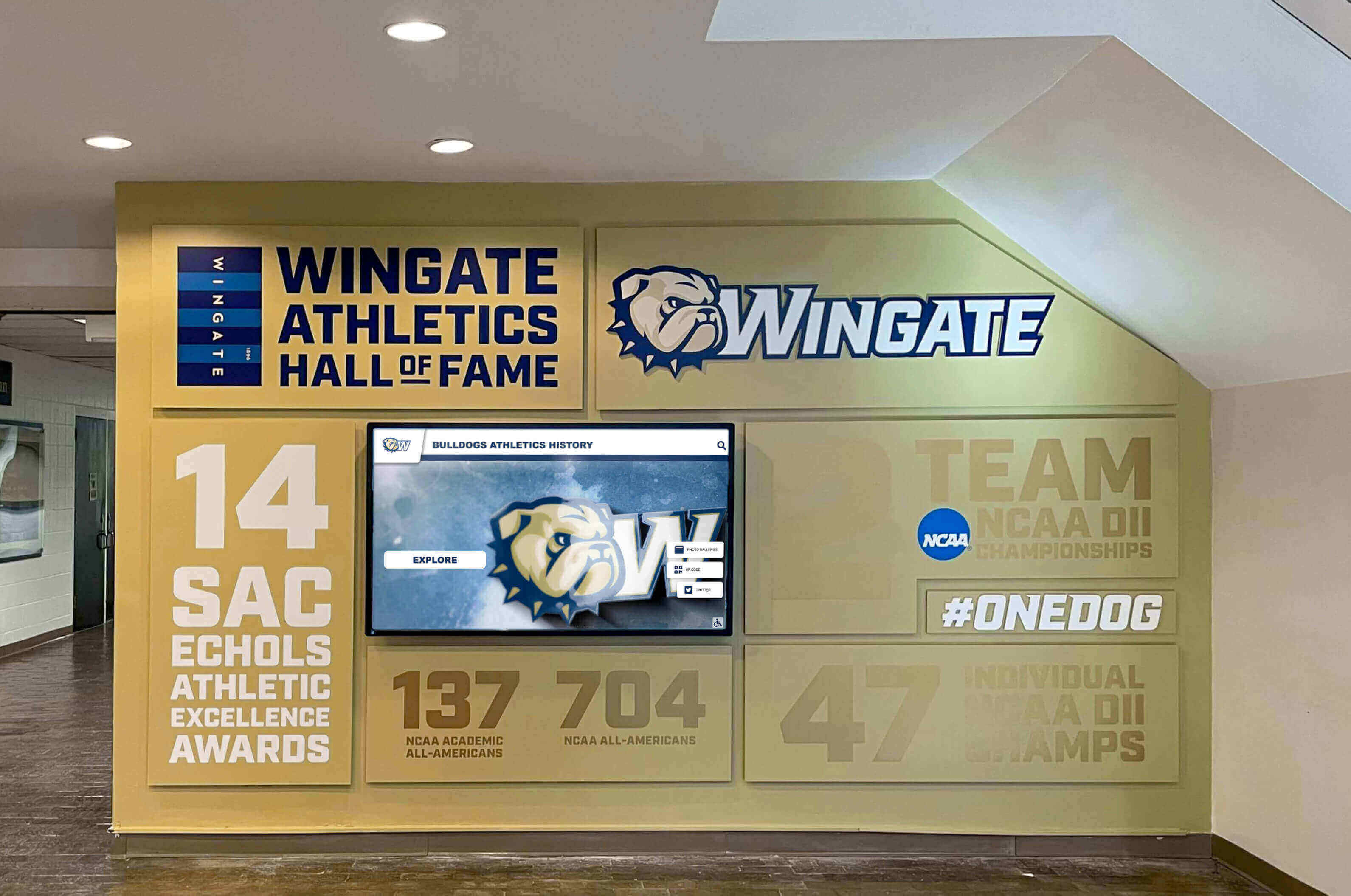
Conclusion
Integrating awards and recognition content into Sidearm Sports athletics websites requires balancing customization with platform constraints, technical capability with maintainability, and aesthetic appeal with performance. By following semantic HTML structure, responsive CSS design, and progressive JavaScript enhancement, athletics departments can create engaging awards displays that honor achievement while providing excellent user experiences across all devices.
Whether implementing custom code within Sidearm’s content management system or leveraging specialized recognition platforms that integrate with existing athletics websites, the key is creating solutions that serve multiple audiences—prospective student-athletes researching program prestige, current students celebrating peers’ accomplishments, alumni reconnecting with institutional traditions, and media members gathering achievement information.
As digital recognition technology continues advancing, athletic departments that establish solid foundations in HTML, CSS, and JavaScript positioning themselves to adapt to emerging capabilities while maintaining the core mission of appropriately honoring the student-athletes who represent their institutions at the highest competitive levels.
For athletics departments seeking to enhance recognition beyond standard website capabilities, exploring purpose-built solutions like Rocket Alumni Solutions provides pathways to comprehensive achievement showcases that complement Sidearm’s content management strengths. Whether through custom Sidearm development or specialized platforms, the goal remains the same: creating meaningful, accessible, and engaging digital experiences that celebrate athletic excellence and inspire future achievement.
Organizations implementing high school football season recognition and other sport-specific honors find that thoughtful digital integration significantly amplifies the impact of recognition programs while preserving the traditions that make athletic achievement meaningful to communities.
